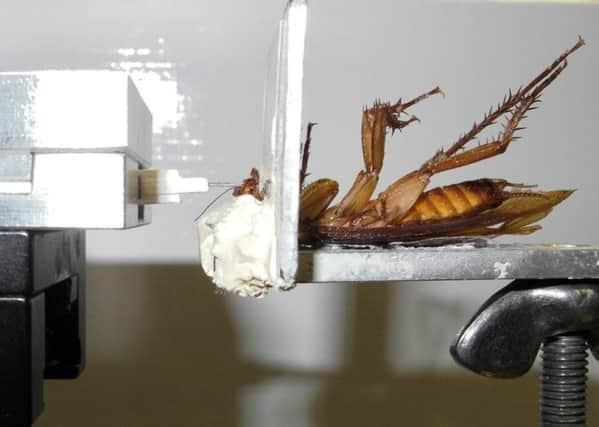Scientists discover ‘turbocharged’ cockroach bite


A special set of “slow twitch” muscle fibres that take time to build up strength are used to provide the biting boost. In relative terms, it gives the cockroach a set of jaws five times stronger than a human’s.
Understanding how cockroaches and other insects manipulate their mandibles could help engineers solve problems such as designing small, strong actuators, or motors, for micro-surgical instruments.
Advertisement
Hide AdAdvertisement
Hide AdLead researcher Dr Tom Weihmann, from Cambridge University’s Department of Zoology, said: “As insects play a dominant role in many ecosystems, understanding the amount of force that these insects can exert through their mandibles is a pivotal step in better understanding behavioural and ecological processes and enabling bio-inspired engineering,
“Ours is the first study to measure the bite forces of ordinary insects, and we found that the American cockroach, Periplaneta americana, can generate a bite force around 50 times stronger than their own body weight. In relative terms that’s about five times stronger than the force a human can generate with their jaws.”
Previous studies have primarily focused on the biting performance of larger animals with jaws containing teeth. But insects such as cockroaches have a different biting system based on a set of horizontally-aligned blade-like mandibles. These are not only used for shredding food, but also for digging, transport, defence and feeding offspring.
Because of the way an insect’s head and mouth parts are designed, space for mandible muscles is limited.
To investigate how cockroaches cope with the problem, the scientists measured the force of 300 bites made by a number of insects across a range of mandible opening angles.
They found that cockroaches exert various levels of force, including short, weak bites and powerful bites that last much longer.
The research is published in the online journal Public Library of Science ONE.